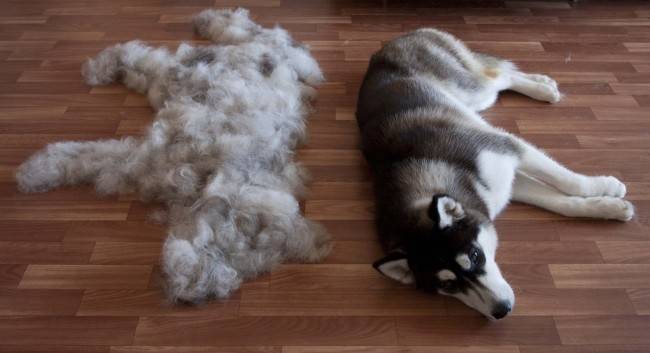If hair is scattered over the hair on the floor, then owners know that the four-legged friend is changing its coat. The natural process is very important for dogs and for most dogs it happens twice a year, in spring and autumn. This post explains when and why a dog changes fur.
The fur is to the dog what clothing is to us. As the season’s change, not only do we change our range of clothing. The four-legged friend also changes its head of hair. Depending on the breed of dog, sometimes more, sometimes less.
Even long-haired and short-haired dogs do not have the same amount of hair, neutered dogs generally have more hair, and females in heat are particularly hairy. In young animals, the change of coat is often over faster. However, almost all fur noses have one thing in common: they change their fur twice a year.
Change of Coat: When or In Which Month?

The change of coat occurs twice a year in the dog, in spring, and in autumn. There is no specific day or specific date on which all dogs change fur. The fact is that they adapt to ambient temperatures. Some pets are more sensitive to the weather than others. The change of coat takes about four to eight weeks.
Each animal has its own rhythm, so there is no general month for the dog to change coat. Often mistresses and masters recognize the change of coat relatively early. The number of dog hairs in the household increases drastically in advance.
Why Does a Dog Change Its Coat?
With a change of coat, four-legged friends adapt to the following season. When the coat changes in autumn, the thicker coat grows. This warms and protects the four-legged friend from the upcoming cold. When it changes its coat in spring, it sheds its thick coat.
In summer, the fur noses benefit from a more airy coat so that they do not sweat too much at high temperatures. Thus, every change serves the dog as an adaptation to different climatic conditions throughout the year.
Recognize Change of Coat: Dandruff and Itching
Owners who comb and brush their four-legged friends daily as part of their coat care will quickly notice the upcoming coat change. The change from summer to winter fur can be recognized by the dog’s undercoat. This grows more densely, while the summer outer hair falls out.
The dogs are very stressed during this time. Sometimes the dog looks tired or sick. The change of coat is not pleasant, but rather strenuous. Breeds with a strong undercoat in particular are often affected by itching, as the dead hair is a nuisance.
If the scratching causes increased irritation on the skin, you should make an appointment with the vet. Also, if the dog forms strong scales when changing fur, it is a case for the veterinarian. However, a small, flaky failure is quite normal when changing.
Which Breeds Shed a Lot?
Breeds with a strong undercoat have extreme hair loss in spring. These include long-haired dogs such as Chow Chows, long-haired Collies, an Australian Shepherd, or Huskies.
Short-haired dogs like the French Bulldog or the Great Dane do not hair as much. However, these breeds have problems with the cold in winter and with the sun in summer. In addition, there are actually also dog breeds that do not shed at all.
Support: Accelerate the Change of Coat
If the dog struggles with the change of coat for a long time or suffers from constant itching, you can support him with the following tips.
Good feed oils
Salmon, linseed, and hemp oil are recommended for a shiny and natural coat. They can be mixed with the food, preferably in consultation with the veterinarian.
Nutrient-rich diet
A balanced menu helps your four-legged friend a lot during this stressful time. Nutrient-rich feed is ideal so that the regrowing coat remains healthy and strong. Brewer’s yeast, rose hips, unsaturated fatty acids, proteins, and biotin work particularly well.
Regular grooming
Before, during, or after – regular grooming of the coat is very important. With daily combing and brushing, you simply filter out dead hair and rid your darling of dead fur. In addition, regular brushing, for example, promotes blood circulation in the skin
